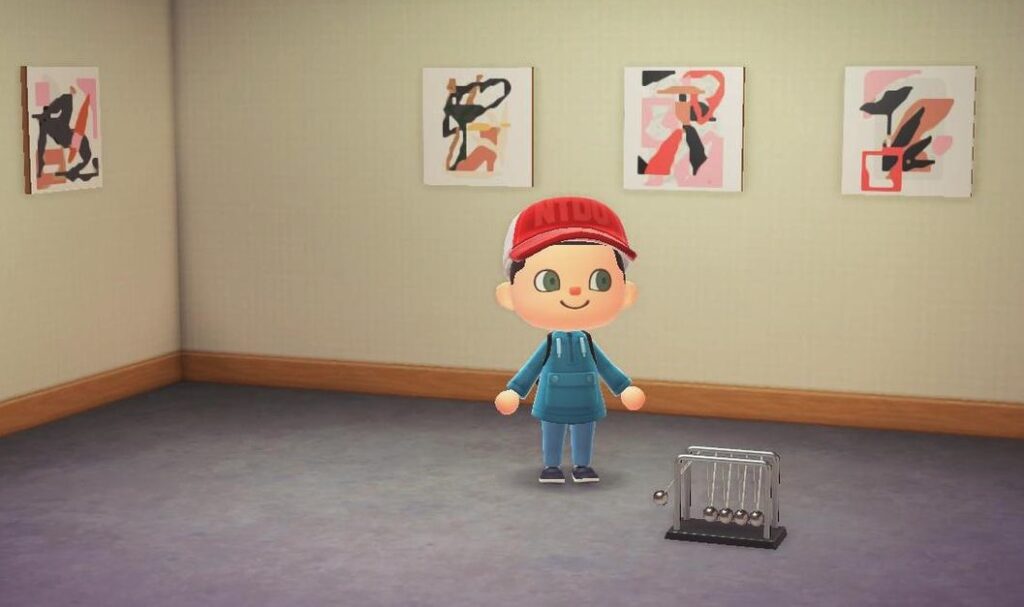In Animal Crossing: New Horizons, you will embark on a journey with Jolly Redd, who returns with furniture and art. You will follow him to the boat, where he has various paintings for sale. Therefore, you should be keen if you want to purchase genuine paintings amidst fake ones.
You can only purchase one of the four displayed paintings, so you better choose wisely. So, how do you spot a fake painting in Animal Crossing? It is quite easy after reading through this article that shares tips on how to do so.
Are Redd’s paintings always fake?
Redd returns with four types of paintings and two pieces of furniture in Animal Crossing. His purpose is to sell you genuine paintings which can be donated to the museum and fake ones which cannot. In some cases, all four artworks can turn out to be fake.
On the other hand, Redd may sell more than one genuine painting. As per the nameplates in the museum, there are 43 art paintings you are required to find and donate. Once purchased, the artwork will be mailed to you the following day.
Read: How to get log stakes in Animal Crossing
How to spot fake crazy Redd’s painting in Animal Crossing?
Jolly Redd’s artworks are based on real-world sculptures and paintings. The sly fox will, however, try to sell you a fake one that looks similar to the original one. So it is safe to say that each fake artwork has a visible difference from the original one.

However, it isn’t easy to differentiate the two in Animal Crossing: New Horizon since Redd has upgraded his skill from Animal Crossing: New Leaf. We shall, therefore, highlight the difference between a fake painting and a real one in each of the categorial paintings.
- “Lady with an Ermine” – Leonardo da Vinci as the serene painting: The real artwork has the woman holding an all-white ermine. The ermine in the fake one has raccoon-like circles under his eyes.
- “The Mona Lisa” – Leonardo da Vinci as famous painting: The woman in the fake painting has eyebrows drawn on her.
- “Las Meninas” – Diego Velazquez as the solemn painting: In the fake painting, the man in the background raises his arm more than in the real artwork.
- “The Blue Boy” – Thomas Gainsborough as the basic painting: The boy has more hair in the fake version.
- “Ajisai Sōkeizu” – Itō Jakuchū as the detailed painting: The fake painting has purple foliage instead of blue and is missing a signature on the left.
- “Folding screen of Fūjin and Raijin” – Tawaraya Sōtatsu: The beast in the fake artwork is white when instead it should be green.
- “The Milkmaid” – Johannes Vermeer as the quaint painting: The woman in the fake painting is pouring more milk than in the real version.
- “The Night Watch” – Rembrandt Van Rijn as the amazing painting: In the fake painting, the man in the front with a dark suit is missing his hat.
- “Ōtani Oniji the 3rd As Yakko Edobei” – Tōshūsai Sharaku as the scary painting: In the fake painting, the man has sad-looking eyebrows, while in the real one, they are angrier. Another fake version will have him smiling and having sad-looking eyebrows.
- “The Birth of Venus” by Sandro Botticelli is the moving painting: The trees are missing in the top right corner in the fake version.
- “The Hunters in the Snow” – Pieter Bruegel the Elder as the scenic painting: The fake artwork is missing a hunter and some dogs.
- “Girl with A Pearl Earring” – Johannes Vermeer as the wistful painting: The real painting has pearl earrings, while the one in the fake version has a star-shaped earring, and her eyes are shut.
- “Vitruvian Man” – Leonardo Da Vinci as the academic painting: The fake version has a coffee stain at the corner of the painting.
- “Beauty Looking Back” – Hishikawa Moronobu as the graceful painting: In the real artwork, the woman has a white tag near her hair, while in the fake one, she doesn’t. Furthermore, the woman in the fake version is larger and looks toward the left instead of the right.
- “Summer” – Giuseppe Arcimboldo as the jolly painting: The painting misses the sprout on the subject’s chest in the fake version.
Read: How to catch Tarantula in Animal Crossing: New Horizons
Paintings that are always genuine
Below is a list of paintings that are always genuine:
- “Liberty leading the people” – Eugene Delacroix as the worthy painting.
- “The Clothed Maja” – Francisco De Goya as the warm artwork.
- “A Sunday Afternoon on the Island of La Grande Jatte” – Georges Seurat as the calm artwork.
- “The Fighting Temeraire” – Joseph Mallord William Turner as the glowing painting.
- “The Gleaners” – Jean-François Millet as the common painting.
- “Ophelia” – John Everett Millais as the sinking painting.
- “The Sower” – Jean-François Millet as the moody painting.
- “The Fifer” – Edouard Manet as the nice painting.
- “36 Views of Mount Fuji the Great Wave Off Kanagawa” – Katsushika Hokusai as the dynamic painting.
- “A bar at the Folies-Bergѐre” – Édouard Manet as the proper painting.
- “Isle of the Dead” – Arnold Bӧcklin as the mysterious painting.
- “The Starry Night” – Vincent Van Gough as the twinkling painting.
- Apples and Oranges by Paul Ceźanne is the Perfect painting.
- Sunflowers by Vincent Van Gogh is a flowery painting.
What do you do with fake paintings in Animal Crossing?
If you have purchased a fake painting in Animal Crossing, you cannot donate it to the museum. Neither Timmy nor Tommy would want to purchase it.
The only option left is to dispose of it using a Trash Can furnishing item if you have no use for it. You can also choose to display it in your home or island since they are considered to be haunted.

